Take a stroll down the Blythe Road’s residential parts, and the views encountered wouldn’t be radically dissimilar to much of West London. The sober tones of exposed brick, period and occasional stucco facades obediently run parallel to the meandering path of the road.
Walk with a gaze aimed firmly at these facades and you’ll find one bleeding into the next, and perhaps with that observation, an urban script forming in your head, searching for a pattern or system as to why these houses are the way they are. And, perhaps, this view may hold true for a little while; that is, of course, until you reach No. 188.
Observing the Anomaly

A short, rather understated, front wall reflects the property’s sense of awareness of its surrounding. Muted and discreet, the wall unassumingly tracks the road like neighbouring houses. However, the off-white and almost rosy hue of the handmade Petersen brick, all within sight, inspires that there is something peculiarly different about No. 188.
Look up a little higher, and you’ll observe a cylindrical form, magnificently clad with two rows of large, feature windows. Even this bucks the trend, breaking from the norm in the way they play with shape: some frames rectangular, another, a square, and another, a circle. Continuing with the dialogue of you as the pedestrian, it’s highly probable that, at this point, you’ve ground to a complete halt. Like us, you’re captivated, kept there by a curious desire to understand the unique typography etched into the property, and I suppose more simply, just how and why it came to be.
 Like all truly elegant architectural works, the home of Alex Michaelis, head of the world-renowned Michaelis Boyd Associates with partners Tim Boyd and Simon Haycock, does not announce its presence, rather, it draws in, lures with a slow yet enduring magnetism.
Like all truly elegant architectural works, the home of Alex Michaelis, head of the world-renowned Michaelis Boyd Associates with partners Tim Boyd and Simon Haycock, does not announce its presence, rather, it draws in, lures with a slow yet enduring magnetism.
Tucked between two surrounding brick buildings, a huge part of the home’s charm is the effortlessness with which it negotiates the long and narrow plot of land on which it is built. Formerly a disused garage, No. 188 Blythe Road was originally destined to be the site of a joint project between Michaelis and a developer. However, when circumstances led him to sell his former home, also self-designed in Oxford Gardens, Michaelis bought the site from the developer; No. 188 Blythe Road became a new blank canvas onto which Michaelis was able to project a pure and unrestrained artistic vision for a bespoke home for both he and his family.


From the Outside
No. 188’s unique and inventive abstract form was inspired by Michaelis’ own artistic ideas to maximise natural light throughout the property, whilst also negotiating the odd shape of the plot of land on which the property now lies. In this sense, the home is purposefully detached to achieve natural illumination from all sides of the property. Michaelis’ liberal incorporation of windows captures natural light in ample quantity. This design philosophy is also maintained in the vertical plane.
As Michaelis states:
I thought it was really important, from the first floor up, to shrink the building a little bit to get light into the floors below.
Two turrets like, cylindrical forms are observed at the home’s northern and southern-most extremities.


Standing proud of surrounding buildings, Michaelis took full advantage of this by developing rooftop terraces on either tower, both of which offer great skyline views of West London. Michaelis was unable to maintain this height in the middle section of the property, as this would have reduced the light available to neighbouring homes.
Nevertheless, this does not detract from the ease with which light flows from room to room, giving the home a naturalistic and organic feel. In this sense, there’s a sense of movement within various spaces in the home. They work together, complementing each other as a coherent living space as opposed to defined and separate domains within a home.
However, this is not to say that the design of 188 Blythe Road is defined by the pragmatics of facilitating this, alone. As Michaelis mentions:
I always liked playing with form, not just fitting in
And No. 188 Blythe Road does anything but merely fit in. Its design is adventurous but simple and logical also. It is this penchant for functional yet strikingly original designs that has won Michaelis Boyd Associates international acclaim, with Michaelis’ home noteworthy a prime example of this.
The property is confident in its own identity- a home by definition, but one imagined in a modernist style. The ‘living wall’ is an example of this. The garden of convention lifted onto a vertical plane. A variety of plants, creepers and trees are planted on the ground level, which Michaelis hopes to grow against the side of the home. To achieve this, Michaelis worked closely with garden designer Jinny Blom.
The ‘living wall’ is an idea he credits to the philosophies of architect-cum-artist, Le Corbusier, whose stylistic touch can be seen all over the property also.
Michaelis notes one of Le Corbusier’s many mantras:
When you take a piece of land away, you have to try to give as much as you can back … as the plants grow, the whole thing will come alive.
The geometries at play in Michaelis’ design also serves as another tip of the hat to Corbusian modernism. The home’s exterior form clashes clean lines against free-form shapes, reminiscent of those seen in Le Corbusier’s own canonical, architectural masterpieces.
Modes of Travel
Michaelis’ tireless attention to detail and inventive methods in creating a connectedness between the house’s rooms means the entire home is gorgeously tied together. This opens up a variety for equally inventive ways in which it can be experienced.


A labyrinth of portholes, glass doors, bridges, slides and gorgeously large, feature windows inspire new ways of navigating the home’s various spaces. It is difficult to experience the home with any prolonged sense of repetition or weariness.

 There’s always something new, a detail that you perhaps may not have previously caught, or a sense of play between the light and the room that may have formerly gone unnoticed. The complexity of the design means that the home is stimulating, engaging and does not tire.
There’s always something new, a detail that you perhaps may not have previously caught, or a sense of play between the light and the room that may have formerly gone unnoticed. The complexity of the design means that the home is stimulating, engaging and does not tire.
The fireman’s pole is possibly one of the most thrilling ways of navigating the home. It’s certainly a favourite amongst adults and children alike. Cutting through the stairs and living quarters that both wrap around it, the fireman’s pole brings out the inner-child out of everyone.
As Michaelis states:
You can see the glint in every adult’s eye when they first see the pole.
It’s a feature born out of his belief that architecture can have a lighter side and be both fun and entertaining. The fireman’s pole has made a believer out of many a sceptic of this perspective.
Working Our Way Indoors
Enter through the front and you’re immediately greeted by the home’s spacious living, kitchen and dining areas, which occupy much of the property’s ground floor. It is here that we also encounter the home’s foundational colours and textures, which sets the tone for much of the property. 
 The floors are lined with Dinsen Douglas fir wood. Its light, ashen tone introduces a likewise lightness to the room, whilst the wood’s pronounced grain maintains a dressed-down, naturalistic touch that greatly contributes to the organic atmosphere that Michaelis strived for. This makes for a seamless transition between the home’s outdoor and indoor spaces also, as evidenced by the tonal pairing between the decking of the pool areas, and the fir on the other side of the spacious and transparent glass door.
The floors are lined with Dinsen Douglas fir wood. Its light, ashen tone introduces a likewise lightness to the room, whilst the wood’s pronounced grain maintains a dressed-down, naturalistic touch that greatly contributes to the organic atmosphere that Michaelis strived for. This makes for a seamless transition between the home’s outdoor and indoor spaces also, as evidenced by the tonal pairing between the decking of the pool areas, and the fir on the other side of the spacious and transparent glass door.
The flooring is matched gorgeously with the walls, deliberately left with an unpainted plaster finish. It makes for a great textural counterpoint to the wood’s grain, though still retaining a rustic and relaxed appeal of its own.


The plastering’s light, almost pale orange-brown hue makes for a gorgeous tonal pairing with the fir. The neutral nature of these colours open up countless possibilities with regard to the design of the rooms – Michaelis takes this to full advantage.
Nestled in an around the living and dining areas are pieces of dark, silhouette-like furniture evocative of midcentury modern, late colonial, industrial, and classical European schools of thought. The home marries these various, differently styled pieces with ease. This undeniably stamps Michaelis’ own identity, but also providing a less-formal and ‘homely’ atmosphere.


Rather than style, Michaelis uses the pieces’ deep, near black colours to tie the home together. The contract created against the home’s light walls and flooring also adds a gorgeous sense of depth also.
Let’s Eat
The kitchen accounts for one of the zones in the open planned entrance area. 
Boasting the professional-standard Electrolux Grand Cuisine kitchen, the kitchen packs the versatility to cater for everyday cooking needs to occasions such as entertaining guests. 
The home’s kitchen is a fantastically functional space.
The work surfaces and central island are both finished in clinical brushed metal, professional and resistant to daily wear and tear. However, a focus on functionality does not necessitate a compromise in its looks, and the home’s kitchen being a prime example of this. Its angular forms play off the room natural geometries. 
Though not rustic by any means, its mainly brushed metal finish makes for a gorgeous accent to the tawny, naturalistic tones in the room.
Moving Up
Work your way up the winding staircase and you’ll find the home’s bedrooms and bathrooms. 
No. 188’s front column features the master bedroom and ensuite, along with two bedrooms belonging to Michaelis’ children; the remainder are found in the home’s lower bout. For the most part, the home’s upstairs section maintains the design mantras of its social areas, fashioned to give the property a relaxed, soothing and homely touch. However, it does shift gears a little. 
The playful energy and rusticity of the brazen orange notes, found in the house’s lower decks, are replaced by more tranquil and muted grey-browns. Texturally, oriental tiles make an appearance as accents in the rooms, again to evoke a mellower ambience in these spaces.
Simplicity is another defining feature of these sections of the home. Though not minimalistic by any means, Michaelis has a knack for seeing the beauty in space. This again resonates with his goal in creating an organic living space. Through exercising a tasteful economy with his interior appointments, the bedrooms feel uncongested and can breathe.
The ensuite and bathrooms follow suit. With the bathtub and other appointments boasting brash and unapologetic, angular lines the bathrooms remind the viewer that the home is still defiantly a product of the modernist school of architecture. Though confident, these are not harsh or offensive, nor do they detract from the functionality of these items.
Paired with a musky greens and muted greys, a mellow tonal palette reinstates a sense of tranquillity amidst the bathrooms’ dramatically styled fittings.
Bespoke, Beautiful
Today, the word bespoke seems to have taken on a second life in the world of mass-marketing, and every now and again, something comes along that really captures the word in its entire essence. No. 188 Blythe Road is certainly one of these things.


Having taken a close look, it’s difficult to argue against the idea of every element of the home as being tailor-made for the Michaelis family.
From the mapping of the house’s various zones, to the way in which they are navigated and experienced, to the fine-tuned ambiences of each room’s decoration, Michaelis has left no stone unturned. The home is also an example of what can be built without limitation.
Having built from the ground up, Alex Michaelis was able to realise, not only a functional, family home, but also an artistic vision.
All photos courtesy of No. 188 Blythe Road by Tim Evan-Cook & John Cullen








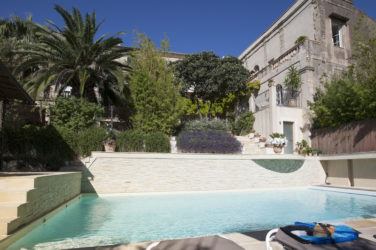
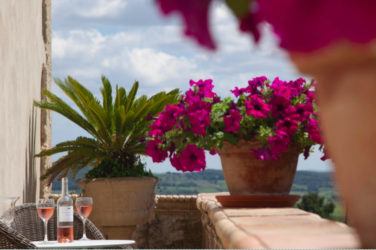
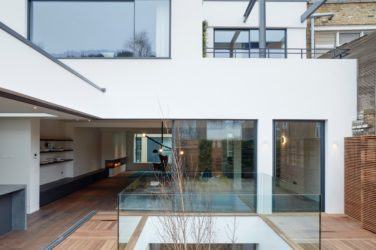
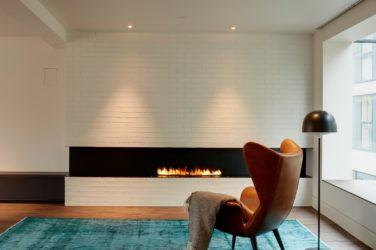
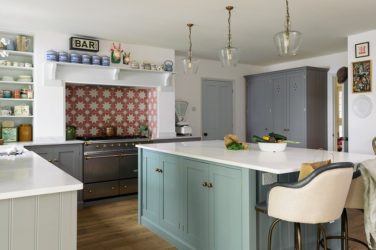
Show Comments